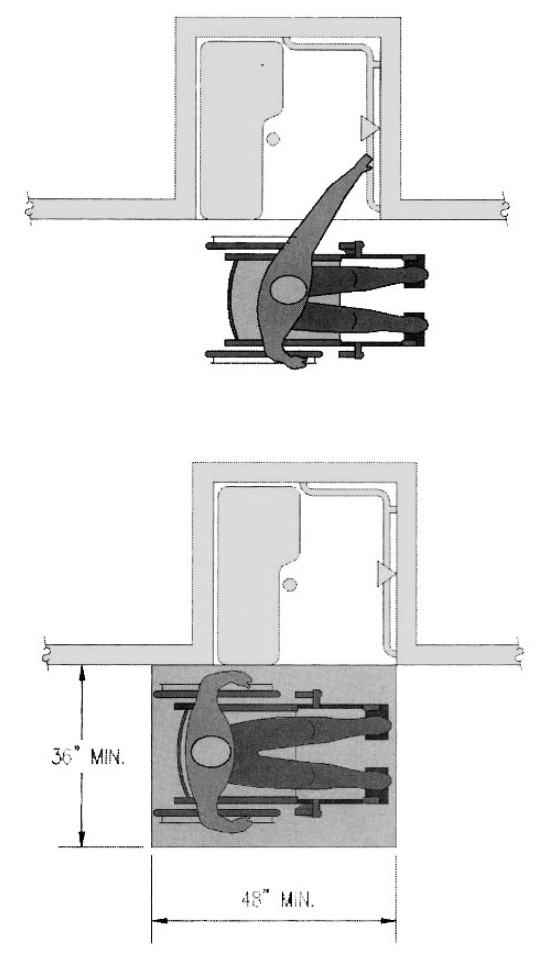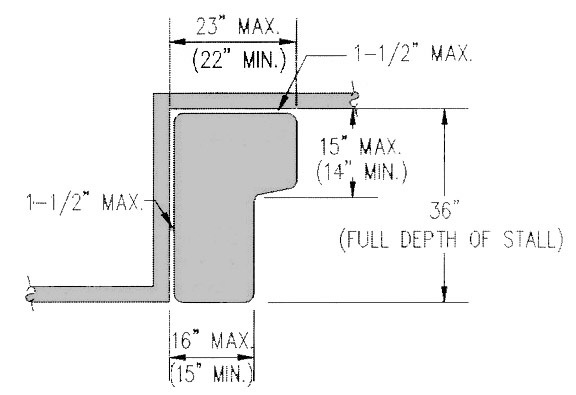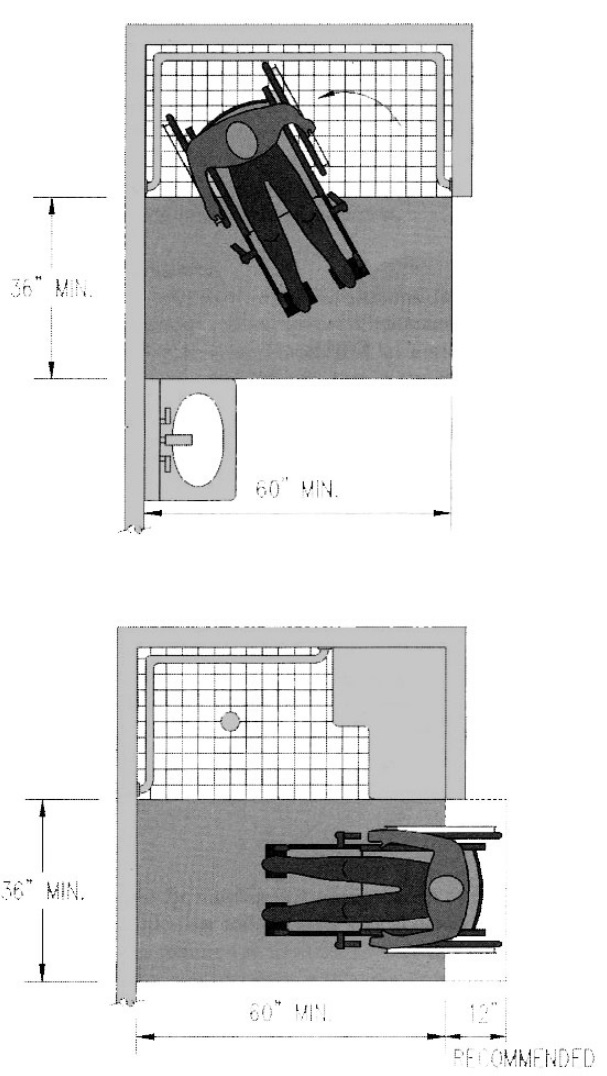Shower Stalls [4.21]
In accessible bathing facilities, at least one tub or one shower must be accessible. ADAAG provides specifications for several types of shower stall designs: roll-in, transfer, and, in hotels (section 9), a combination of the two. Often a shower chair, a mobility aid more suitable for bathing than a typical wheelchair, is used with roll-in showers. Roll-in showers are most practical where shower chairs can be made readily available (e.g., dwelling units, dormitories, rehabilitation facilities). A folding seat in a roll-in shower offers greater flexibility by allowing transfer as well. Combination roll-in transfer stalls are required in a portion of hotel guest rooms for this reason. ADAAG does not specifically address accessibility in gang showers; a roll-in shower can be incorporated into the design by providing grab bars in a complying configuration.
Size and Clearances [4.21.2]
Clear floor space is specified for side transfers. Where a forward approach is provided, space at least 60 inches wide provides room for turning. Recommendations: Consider additional clear floor space beyond the control wall to facilitate the reach to controls. (Where a row of stalls is provided, avoid locating accessible stalls in corners).
The 36 by 36 inch dimension, measured to the interior finish, keeps front and side grab bars within reach from the seat. Grab bars are configured so they do not interfere with use of the seat.

Seat [4.21.3]
ADAAG specifies maximum seat dimensions. Minimum dimensions contained in the CABO-ANSI A117.1‒1992 standard are acceptable. The seat must extend the full depth of the transfer stall to help minimize the gap between the seat and a wheelchair. Folding seats can be used.

Curbs [4.21.7]
Curbs are limited to ½ inch (measured from the room floor and the shower floor) so as not to interfere with entry to the shower. This height limit also allows wheelchair footrests to clear the curb so that a person using a wheelchair can partially pull into the stall for transfer to the seat.
Size and Clearances [4.21.2]
Lavatories can be located within the clear floor space (as shown in ADAAG Figure 35). Recommendation:Placing them beyond this space however can provide easier maneuvering to and from the shower. When a seat is provided in a roll-in shower, it must be a folding seat. Recommendation: Twelve inches of additional clear floor space at the seat will facilitate side transfers.

Controls [4.21.5]
Controls and shower units can be located on any wall but where a folding seat is provided they must be located to be within reach of a person on the seat. Grab bars are configured differently in showers with seats so that a person can lean back against the wall for support. The dimensions for seats in 36 inch stalls are appropriate for seats in roll-in showers as well.
Curbs [4.21.7]
Curbs are not permitted at roll-in showers. A slope up to 2% is allowed for drainage.

User Comments/Questions
Add Comment/Question